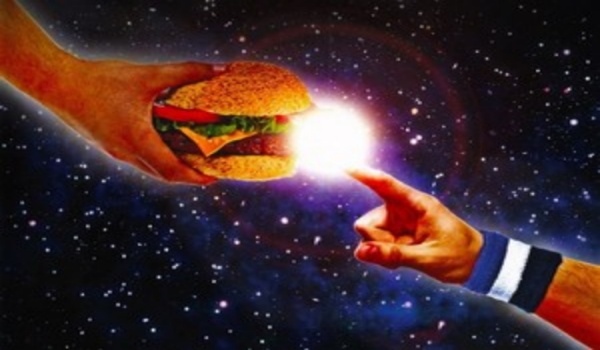The planet is obese
No, not humans. The WHOLE planet. We just take the merit.

The image above is borrowed from Fat Planet, simply because that movie is about a planet “where… fat is everything”. But this is not about human fat.
No matter how we speak of pollution, and worry about it, the feeling that the Earth is so big that nothing we may possibly do can seriously alter, or overcome it, is still present in the background of all our brains. But this year that feeling has become harder to take seriously.
Biomass, enter Anthropogenic Mass (or it’s the opposite?)
Biomass is the mass of all living organisms on Earth, including “all the fish in the sea, microbes in the soil, trees on land, birds in the air and much more”.
Anthropogenic Mass, instead, is the collective mass of “all the things we build: houses, cars, roads, aeroplanes and myriad other things”.
Which mass “wins”?
In the last years, a team of scientists has calculated, as accurately as possible, the current values and composition of both masses.
According to their conclusions, in 2020 biomass amounts (not counting water) to a little less than 1.2 trillion tonnes.
Anthropogenic mass, instead, was a little over half a trillion tonnes by the end of the 20th century. Since then, in just 20 more years, it has doubled and this year became equivalent to the biomass. In other twenty years, if we keep doing things the same way, anthropogenic mass will be three times the (left) biomass.
What are they made of?
Biomass consists mostly of trees on land, which are now half what they were before humans started clearing forests.
Anthropogenic Mass is made, for about 80%, of concrete and aggregates. Then come bricks, asphalt and metals. Plastic comes later, but not enough, considering that it now is literally everywhere, including placentas of unborn babies.
Preparing the right planetary diet
As the “plastic in placentas” finding proves, mass in itself is far from being the only metric that should be considered in public and personal policies about manufacturing, or consumption. Another excellent example of this truth is smartphones, that should be changed every twenty years, not every 2, no matter how little they seem to weigh.
Still, this finding that our “equipment” weights as much as all other living things combined is something to take seriously. It surely stresses the necessity to be lazy, and the fact that rationing may become a thing in the near future. Starting from industries, of course.
Who writes this, why, and how to help
I am Marco Fioretti, tech writer and aspiring polymath doing human-digital research and popularization.
I do it because YOUR civil rights and the quality of YOUR life depend every year more on how software is used AROUND you.
To this end, I have already shared more than a million words on this blog, without any paywall or user tracking, and am sharing the next million through a newsletter, also without any paywall.
The more direct support I get, the more I can continue to inform for free parents, teachers, decision makers, and everybody else who should know more stuff like this. You can support me with paid subscriptions to my newsletter, donations via PayPal (mfioretti@nexaima.net) or LiberaPay, or in any of the other ways listed here.THANKS for your support!